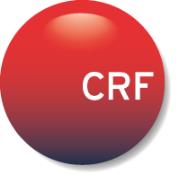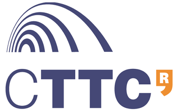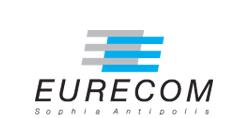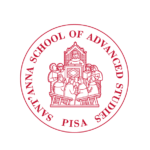LOCATION OF OUR PARTNERS
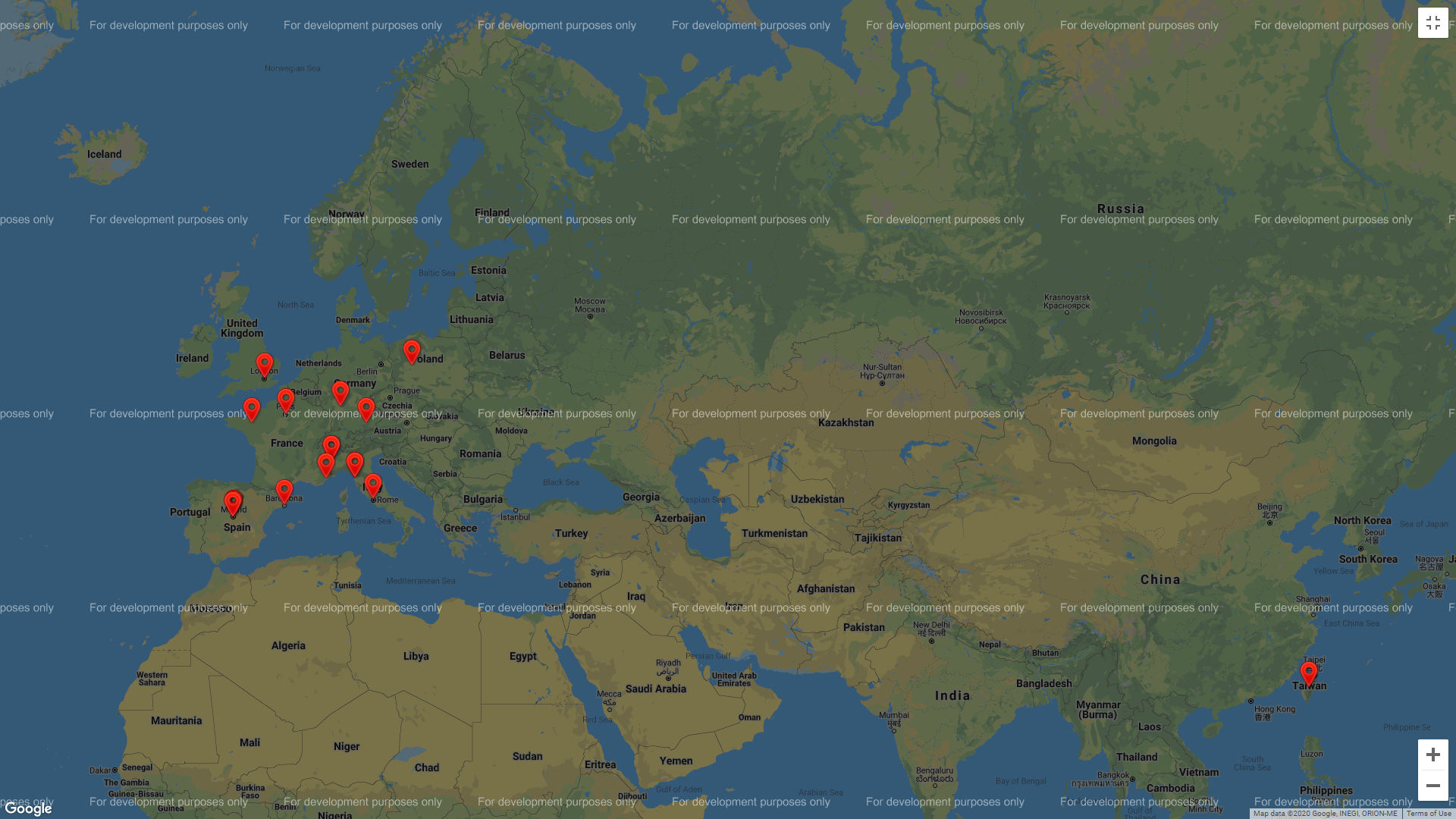
Different companies and entities have come together to jointly participate in the 5G-TRANSFORMER project:
University Carlos III of Madrid (UC3M) was founded in 1989 with the objective of providing an efficient, high quality public undergraduate and graduate education. In its two decades of existence, it has established itself among the best universities in Spain – in 2012, UC3M was included in the QS ranking of the top 50 universities world-wide under 50. The Telematics Department of UC3M is involved in education and research on broadband networks, mobile networks, advanced Internet networking and applications, and has recently been ranked as the best Department in its area in Spain by the main national ranking. Its staff has participated and coordinated projects of several European R&D programs, e.g., ICT Carmen, ICT Trilogy, IST Daidalos, ICT Medieval, ICT iJOIN, ICT CROWD and Spanish R&D programs, and also in contracts with the industry and public administrations.
NEC Corporation produces tailored solutions for the core technologies and services required in a networked world, ranging from advanced semiconductor solutions, to large-scale mission-critical systems, systems integration, and broadband and mobile technologies. The NEC group employs more than 150,000 people with a multi-billion dollar sales volume worldwide. NEC began business in Europe in the early 1970s. Today, NEC has 19 affiliated companies in Europe alone. NEC Europe Ltd., which is wholly owned by NEC Corporation, was established in London in 1993. As a research unit wholly owned by NEC Europe Ltd., the NEC Laboratories Europe in Heidelberg, Germany, was established in 1994 and changed to "NEC Laboratories Europe GmbH (NECLE)" since January 2018. With the focus on R&D for the next generation mobile and fixed networks, and the Future Internet, a special emphasis lies on developing and proposing solutions that meet the market needs of NEC’s European customers. More specifically, NECLE is focusing on software-oriented R&D required for the convergence of IT and communications, including Software-Defined Networking (SDN), Network Functions Virtualization (NFV) and Cloud Computing in order to meet the 5G service-rollout ambitions of its key European accounts. A strong focus is also placed on contributions to relevant standardization fora, such as the Internet Engineering Task Force (IETF), the 3rd Generation Partnership Project (3GPP) and the Broadband Forum (BBF). In the context of Network Function Virtualization and Software Defined Networking, NECLE is contributing actively to the ETSI NFV and ETSI MEC groups as well as to the Open Networking Foundation (ONF).
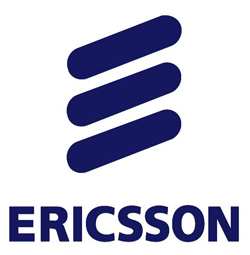
Ericsson Telecomunicazioni SpA (TEI) is a company in the Ericsson Group (Ericsson). Ericsson is a world leader in communications technology and services and a driving force behind the Networked Society. Ericsson long-term relationships with every major telecom operator in the world allow people, businesses and societies to fulfil their potential and create a more sustainable future. Ericsson services, software and infrastructure – especially in mobility, broadband and the cloud – are enabling the telecom industry and other sectors to do better business, increase efficiency, improve the user experience and capture new opportunities. With more than 110,000 professionals and customers in 180 countries, Ericsson combines global scale with technology and services leadership. Ericsson supports networks that connect more than 2.5 billion subscribers. Forty percent of the world’s mobile traffic is carried over Ericsson networks. And its investments in research and development ensure that Ericsson solutions – and customers – stay in front. Founded in 1876, Ericsson has its headquarters in Stockholm, Sweden. Net sales in 2013 were SEK 227.4 billion (USD 34.9 billion). Ericsson is listed on NASDAQ OMX stock exchange in Stockholm and the NASDAQ in New York.
The organization within Ericsson which will be engaged in the project, called Ericsson Research, provides Ericsson with system concepts, technology and methodology, to secure long-term competitive product provisioning. World-class innovation is achieved through cooperation within Ericsson and with partners, customers, universities and research institutes.
Ericsson Telecomunicazioni SpA hosts in Pisa focus on optical technologies, systems and networks. The research team in Pisa, which will directly contribute to the project, has a proven experience in optical system and technologies. In the last seven years, the group has demonstrated an extensive set of cutting edge technologies and solutions in lab demonstrations, prototypes, and in field trials. Among the several demonstrations: colourless WDM-PON, unified control plane for packet optical networks, optical burst switching, open access enabling optical systems, digital ROADM, integrated photonics ROADM, CPRI over WDM, end-to-end service provisioning in IP over optical networks, 1 Tbit/s transmission over a distance of about 1000 km between two optical end nodes located in Australia, in presence of add drop nodes designed for 100 Gbit/s transmission.
Atos is an international information technology services company, delivering hi-tech transactional services, consulting, systems integration and managed services. Atos is focused on business technology that powers progress and helps organisations to create their firm of the future. It is the Worldwide Information Technology Partner for the Olympic Games and is quoted on the Paris Eurolist Market. The company’s annual revenues are more than EUR 8.7 billion and it employs over 78,500 business technologists worldwide in 42 countries. Atos was established on July 1st 2011, following the successful integration of Atos Origin and Siemens IT Solutions and Services.
Atos has proven expertise and capabilities across telecommunications core and support processes. With more than 9,000 professionals in Telecommunications, Media and Technology, we provide services to over 220 clients in Telecom sector.
Media Lab, within the Atos Research & Innovation (ARI) Department, brings its expertise in the media distribution and CDN vendor’s technology and infrastructures. The group technical expertise has been developed in R&D projects such as OLYMPIC, iSCORE, LIVE My eDirector 2012, SMART, SARACEN, BUSCAMEDIA, EXPERIMEDIA among many others. The Media Unit created the technical infrastructure for the broadcasting of Vancouver Winter Olympic Games 2010 for Spain (in partnership with the main Spanish public TV, RTVE), the world broadcasting of the London Paralympics Games 2012 for the International Paralympics Committee, the Sochi 2014 Winter Olympic Games for 95 countries and the worldwide distribution of the 2nd Youth Olympic Games Nanjing 2014. Media Lab support and collaborate with Atos media units such as Atos’ BBC team in charge of the content delivery of the iPlayer.
Atos Research & Innovation (ARI), R&D node of Atos is a point of world reference in innovation for the whole Atos group. Atos participates in R&D projects in national or international consortia that enrich Atos' technological portfolio. Our background of more than 25 years participating in EC projects helps us reinforce our links with our customers by bringing research outcomes to Atos' customers and empowering our role as source of innovative ideas.
Nokia Networks invests in important technologies in a world where billions of devices are connected. We are focused on three businesses: 1) network infrastructure software, hardware and services, offered through Nokia Networks; 2) location intelligence, provided through HERE; and 3) advanced technology development and licensing, pursued through Nokia Technologies. Each of these businesses is a leader in its respective field.
Nokia Networks is the world’s specialist in mobile broadband. From the first ever call on GSM, to the first call on LTE, we operate at the forefront of each generation of mobile technology. Our global experts invent the new capabilities our customers need in their networks. We provide the world’s most efficient mobile networks, the intelligence to maximize the value of those networks, and the services to make it all work seamlessly.
Nokia Networks is implementing a hands-on innovation approach to enable mobile broadband networks to profitably deliver 1 gigabyte of personalized data per user per day by 2020. With our Technology Vision 2020 for future mobile networks, we are helping operators deal with extreme traffic growth, simplify network operations and provide the ultimate personal gigabyte experience.
The industry not only faces a massive increase in data demand, it also needs to boost profitability and personalized experience at the same time. To meet this challenge, we are implementing the following six pillars of our Technology Vision 2020, which have been defined in cooperation with operators globally:
Support up to 1000 times more capacity.
- Teach networks to be self-aware.
- Reduce latency to milliseconds.
- Reinvent Telcos for the cloud.
- Flatten total energy consumption.
- Personalize network experience.
![]()
InterDigital Communications was founded in 1972 with the goal of contributing to wireless technology development. The Company has been a leading contributor to the development of 4G/3G/2G/1G wireless systems, and accordingly has established licenses and partnerships with many of the world's leading wireless companies. Today, InterDigital is a top wireless R&D contributor with offices in Europe (the UK), the USA, and Canada. InterDigital Europe, which was launched in 2013, is working with companies, cities, universities and other entities to foster discussion, break barriers, execute research and help set the stage for European leadership in new technologies, in particular for 5G and IoT/M2M.
Telefónica Investigación y Desarrollo is the innovation company of the Telefónica Group. Owned 100% by Telefónica, this subsidiary was formed in 1988, with the aim of strengthening the Group's competitiveness through technological innovation. TID employs over 600 persons, of whom 93% hold a University degree. Telefónica’s innovation process, which is largely based on the activities of TID, is based on four fundamental lines of work: infrastructures, development of new services, deployment of the so-called “personal digital environment” and a series of common elements. All the activities in TID are carried out conforming to an in-house Project Development and Management Methodology, which has been awarded an ISO 9001 Certification since 1994, updated to the new ISO 9001:2000 in 2001.
Orange is one of the world’s leading telecommunications operators with annual sales of 43.5 billion euros and present in 32 countries. Orange is one of the main European operators for mobile and broadband Internet services and, under the brand Orange Business Services, is one of the world leaders in providing telecommunications services to multinational companies.
Research and innovation is a strategic priority for the Group as it is the key that unlocks our future growth and a powerful differentiator with our competitors. Within the worldwide network, the Orange Labs carry out the Group’s research, technical design and deployment activities. In constant interaction with the industrial and academic worlds, the Orange Labs:
- carry out research projects with two goals: to help the Group identify and prepare for the next breakthrough technologies, and to invent new uses and services concepts;
- lead the Group’s networks strategy and coordinates the Group's standardization strategy, by looking ahead to the next breakthrough technologies, assessing the impact of new products and services, and preparing for changes in network operating models;
- have overall responsibility for the technology used in the Group’s products and services. They are involved throughout the entire development process, from the design of innovative services to the maintenance of systems already installed in each country where the Group operates.
Orange Labs is working on C-RAN and fronthaul since a few years now, with a good expertise on fronthaul transport solutions, contributions at FSAN level and presentations in many international conferences.
Centro Ricerche Fiat (CRF), founded in 1978, has the mission to develop and transfer innovative products, processes and methodologies in order to improve the competitiveness of the products of the Fiat Group. Also through the cooperation with a pan-European and increasingly global network of more than 1800 partners from industry and academia, CRF conducts collaborative research initiatives at the national and international levels in partnership with all the key public and private stakeholders concerned with sustainable mobility, targeting specifically the industrial exploitation of research.
With a workforce of approximately 900 full-time professionals, CRF develops research and innovation along the three principal axes of sustainability: Environmental Sustainability, Social Sustainability, Economically sustainable competitiveness.
It is the Municipal Emergency Assistance and Rescue Service (SAMUR) of the Madrid City Council, composed of 700-member staff, with health care personnel (doctors, nurses and health emergency technicians) and medical transport units of basic and advanced life support.
The main function is the urgency and emergency attention in the city of Madrid by letter of services. They make approximately 130,000 care units’ movements per year in permanent coordination with the Corps of Municipal and National Police and the Fire Department.
B-COM is one of the 8 French Institutes of Technology launched by French government in 2010 and certified in 2012. B-COM is legally a private research foundation (non-profit) viewed as an SME by the European Commission. The objective of the institutes is to achieve excellence in the most competitive sectors such as Networks and Infrastructure technologies that will integrate the next generations of mobile, wired and wireless networks.
B-COM has its own R&I task forces with 3 labs dedicated to Networks & Security domain:
- Network Interfaces dedicated to 5G fibre and radio
- Network Architecture dedicated to convergence and network function virtualization
- Cloud Computing
Nextworks is a dynamic R&D SME that was created in 2002 as a spin-off company of the Computer Science and Telecommunications Division of the Consorzio Pisa Ricerche (CPR–DITEL). Nextworks operates in the TLC sectors, collaborating with some of the major manufacturers and operators (e.g., Marconi, Alcatel- Lucent, Nokia-Siemens Networks, Ericsson, Juniper, Interoute, Wind, Telecom Italia). The company’s team boasts long-term experience and proved skills in the frameworks of Control Plane technologies for wired and wireless transport networks, design and development of complex control software on both traditional and embedded platforms and in Quality of Service (QoS) in packet networks, IP telephony, digital video encoding and streaming.
The R&D team in Nextworks has a solid background on design, development and integration of full networking protocol stacks, ranging from the industrial (carrier-grade) to the pure R&D application area. Also the company has a product line and expertise in integrated control and energy management with multiple sensors/actuators (network and non-network) for IoT/IoE application scenarios (e.g., Building Management and Automation Systems).
Mirantis is the pure play OpenStack company, delivering all the software, services, training, and support needed for running OpenStack. More customers rely on Mirantis than on any other company to get to production deployment of OpenStack at scale. Mirantis is among the top three companies worldwide in contributing open source software to OpenStack, and has helped build and deploy some of the largest OpenStack clouds in the world, at companies such as Telstra, Cisco, Comcast, Ericsson, Shenzhen Stock Exchange, EMC and Symantec. Mirantis is currently the No. 1 contributor to the OpenStack codebase. We are deeply invested in working with the community to innovate upstream. Our community involvement has led to the adoption of several open source projects in OpenStack Big Tent, such as Sahara (big data), Fuel (infrastructure deployment and lifecycle management tool) and Murano (application catalogue). As a pure play OpenStack company, Mirantis helps various enterprises to create platform for building & running Agile IT and deliver new services.
The CTTC, located in Castelldefels (Barcelona), is a private non-profit R&D centre with substantial funding support from the autonomous government of Catalonia along with research and development partnership with industry. Research expertise is mainly focused on technologies related to the lower layers of communication systems, being that activity organized into four main divisions, namely, Communication Networks (CND), Communication Systems (CSD), Communication Technologies (CTD) and Geomatics (GD), each of them featuring key staff with both R&D and engineering skills. The main activities at CTTC consist of long-term research and development projects related to the above research areas.
The team of the CTTC involved in Xhaul has broad experience in research programs due to its participation in several Spanish and European public-funded R&D projects focusing on network control and management, including SDN/NFV. CTTC closely collaborates with leading research institutions in Europe or Japan. Additionally, CTTC has participated in a number of industrial contracts with several relevant companies (e.g., KDDI R&D Labs, Telefónica, Orange, Aviat Networks, Cisco, Wi-Fi Alliance). The team involved in Xhaul actively publishes in peer-reviewed journals and international conferences as a result of its studies on the design and performance evaluation of networking technologies (wired/wireless), whose research usually includes evaluations in cutting-edge laboratory infrastructure/equipment, which includes the EXTREME and ADRENALINE testbeds. More information available at: http://networks.cttc.cat
The Politecnico di Torino, founded in 1906, has a long-standing tradition of leadership of polytechnic culture. It is one of the most important universities in Europe for engineering and architecture studies, strongly committed to collaboration with industry. It is ranked at the 51st position worldwide (8th in Europe and 1st in Italy) in the field “Engineering/Technology/Computer Science” by ARWU (Academic Ranking of World Universities). The Politecnico offers excellence in technology and promotes the ability to carry out theoretical or applied research. It has close relationships with international institutions, companies and local government.
The Telecommunication Networks Group (TNG – http://www.telematics.polito.it) within the Electronics and Telecommunications Department has been active for a long time in several areas related with communication networks, including wireless, optical, TCP/IP and peer-to-peer networks, with a strong expertise on performance evaluation, modelling and analysis. The group has a long experience in European and national projects, and an internationally recognized expertise in the fields covered by the Xhaul project. Among the European projects, coordinated the NoEs, e-Photon/ONe and e-Photon/ONe+ and TREND; participated in BONE, Euro-NF, Euro-NGI and Euro-FGI, NewCom, NewCom++ and NewCom#, FIGARO, ECONET, STRONGEST, FEDERICA, STAMINA and NOBEL2. It was active in the Cost Actions: 257, 273, IC0703. Finally, TNG coordinated the FP7 STREP NAPA-WiNe. TNG is coordinating the FP7 IP project mPlane and the QNRF project GAD.
EURECOM is a research and teaching institute located in the Sophia Antipolis Technopole in the South of France. EURECOM’s research activity focuses on 3 domains which have led to the creation of three research departments: Digital Security, Data Sciences, and Communication Systems. EURECOM has an approximate budget of 10.2 million Euros of which 5.2 million are from research contracts. It has some 150 employees among which 121 are scientists (25 professors, 26 engineers, 75 PhD students).
The Communications System Department has its focus on digital signal processing for mobile communications, information theory, 4th and 5th generation cellular radio systems, wireless protocols, mobile ad hoc networks, software radios, and SW and HW prototyping. In addition to fundamental research, the department has strong expertise in open-architecture multi-way real-time radio platforms for use in publicly-funded research projects aiming at demonstrating innovations at all protocols layers (RF to applications), and founded the OpenAirInterface Software Alliance .
The Scuola Superiore Sant'Anna (SSSA) is a public university with special autonomy that operates in the field of applied sciences. The research activities at SSSA are conducted in six research institutes. The 5G-TRANSFORMER activities will be conducted by personnel of the Institute of Communication, Information and Perception Technologies (TeCIP). The foundation of the TeCIP Institute dates back to 2001, when SSSA, the National Interuniversity Consortium for Telecommunications (CNIT) and the Marconi Communications SpA (now Ericsson) signed a long-term agreement for collaborative research on networks and photonic technologies, thus creating the Centre of Excellence for Communication Network Engineering, a unique example of synergy at national level between universities and industry. The TeCIP Institute consists today of about 60 researchers, including faculty, post-docs and PhD students. Over the years the TeCIP also reached an important position in the national and international scene, thanks to the participation in European projects, national and private agreements with universities, international research centres and laboratories, experiences of joint collaboration at the European and extra-European level. The research topics investigated at TeCIP include various aspects of the network, services, and photonic technologies.
Founded in 1973, Industrial Technology Research Institute (ITRI) has played a vital role in transforming Taiwan’s economy from a labour-intensive industry to a high-tech industry. Focusing on six research fields including Information and Communications, Electronics and Optoelectronics, Material, Chemical and Nanotechnology, Medical Device and Biomedical, Mechanical and Systems, Green Energy and Environment, ITRI has aggressively researched and developed countless next-generation technologies. To date, ITRI holds more than 20,000 patents and has assisted in the creation of more than 240 start-ups and spin-offs. Numerous well-known high-tech companies in Taiwan, such as the leaders in the semiconductor industry TSMC and UMC, can trace their origins to ITRI.
The major pillars of Information and Communication research in ITRI include core technologies for Broadband Wireless Communications, Smart Internet of Everything, Broadband Convergence System & Integration, Mobile Digital Life, Telematics and Intelligent Transportation Systems, Cloud Computing System, Big Data Technologies, Intelligent System and Services Technologies, and SOC and System Platform Design Technology.


